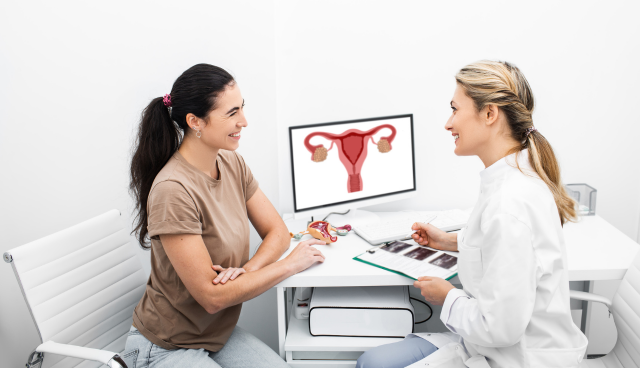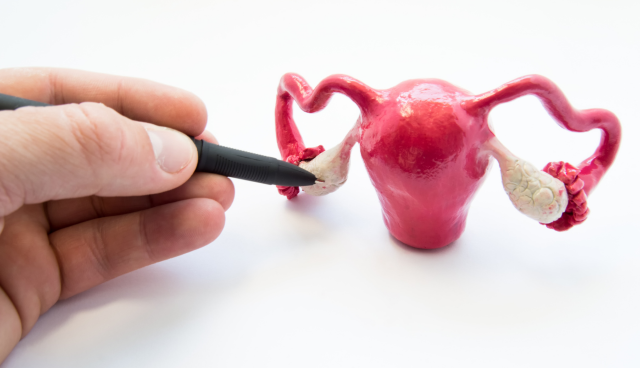
What You Need To Know About Ovarian Cystectomy Surgery
If you’ve been diagnosed with an ovarian cyst, your doctor may recommend ovarian cystectomy surgery to remove it. This procedure involves surgically removing the cyst while preserving normal ovarian tissue as much as possible. Ovarian cystectomies are very common. If you’re facing this surgery, it helps to understand exactly what it entails and what to expect.
What is an Ovarian Cystectomy?
During an ovarian cystectomy, the surgeon will:
- Make small incisions in the abdomen.
- Insert a laparoscope (thin tube with a camera) to see inside.
- Insert narrow instruments through other incisions.
- Locate and remove the ovarian cyst while preserving the ovary.
- Close the incisions with stitches or surgical glue.
This minimally invasive laparoscopic approach results in faster recovery compared to open surgery through a large abdominal incision.
When is Ovarian Cystectomy Performed?
There are several reasons why ovarian cystectomy may be recommended:
- The cyst is large (over 5-10 cm), causing pelvic pain/pressure. Removal provides symptom relief.
- The cyst appears suspicious or complex on imaging. It may need to be removed and biopsied.
- The cyst persists over 2-3 menstrual cycles and doesn’t respond to other treatments.
- The cyst ruptures or twists, cutting off its own blood supply (ovarian torsion). This is a medical emergency requiring prompt cyst removal.
- The cyst is causing infertility by disrupting ovulation. Removing it can restore fertility.
So in general, ovarian cystectomy is performed when a cyst is symptomatic, persists over time, or appears worrisome based on testing.
Types of Ovarian Cystectomies
There are a few types of ovarian cystectomy depending on the specifics of your case:
- Laparoscopic Ovarian Cystectomy:This is the most common approach today. It involves removing the cyst laparoscopically through small incisions. It results in faster recovery while allowing doctors to clearly see and access the ovary.
- Laparotomy Ovarian Cystectomy:If the cyst is very large or your doctor needs better access, they may use an open surgery approach through a larger abdominal incision. This is more invasive but sometimes necessary.
Oophorectomy (Ovarian Cyst Removal with Ovary): If the cyst has significantly damaged the ovary, or if there are concerns about cancer, the entire ovary may need to be removed. This is called an oophorectomy. Your doctor will discuss if this option is right for your case.
What to Expect During Ovarian Cystectomy Surgery
Here’s a step-by-step overview of what you can expect during the ovarian cyst removal procedure:
- Preparation: You’ll change into a hospital gown and an anesthesiologist will administer general anesthesia so you’re asleep for the procedure.
- Incisions: Small incisions (1/2 inch) are made in the navel and lower abdomen wall if laparoscopic. A larger incision is made if open surgery.
- Inserting Camera/Instruments: The laparoscope (camera) and narrow surgical instruments are inserted through the incisions. The abdomen is inflated with gas for visibility.
- Locating the Ovarian Cyst:The surgeon uses the laparoscope to visualize inside and locate the ovarian cyst.
- Removing the Cyst: The cyst is carefully separated from the ovary and drained/extracted. It is removed intact when possible.
Preserving Ovary
The surgeon meticulously dissects away only the cyst, leaving healthy ovarian tissue intact.Removing Ovary if Needed.
If the ovary can’t be saved due to damage, the surgeon may remove the entire ovary.
- Checking for Bleeding:The area is irrigated and checked for bleeding. Bleeding is controlled with cauterization.
- Closing Incisions:The small incisions are closed with absorbable stitches, surgical tape or glue.

Recovering After Ovarian Cystectomy Surgery
- Hospital Stay: You’ll stay in the hospital 1-2 nights after the surgery for close monitoring.
- Pain Management: You’ll be given intravenous pain medications. After discharge, over-the-counter pain relievers are usually sufficient to manage discomfort.
- Activity Restrictions: Avoid strenuous activity for 2-4 weeks after surgery. Walking and light activity is encouraged to prevent blood clots. Listen to your body.
- Diet: Eat a high fiber diet and stay hydrated to prevent constipation. Avoid heavy meals at first while your system adjusts.
- Incision Care: Keep incisions clean while healing. Avoid submerging them in water for 1 week. Watch for signs of infection like redness.
- Follow-up Appointment: You’ll see your doctor again after 1-2 weeks for exam and to remove any stitches/staples.
- Full Recovery: Most people are back to their usual routines within 2-4 weeks after the procedure. Complete recovery can take 4-6 weeks.
Call your doctor right away if you experience fever, bleeding, severe pain, nausea/vomiting or other concerning symptoms after your ovarian cyst removal. Report any issues promptly to avoid complications.
Potential Risks and Complications
Ovarian cystectomy is considered a very safe procedure, especially when performed laparoscopically. However, as with any surgery, there are some risks:
- Bleeding: Usually controlled during surgery but may rarely require additional procedures or transfusions.
- Infection: Occurs in less than 5% of cases. Treated with antibiotics.
- Injury to other organs: The bladder, bowel or arteries may rarely be injured during dissection. Another surgery may be required to repair any injury.
- Loss of ovarian function: Cyst removal may impair the ovary. Up to 10% of women have reduced fertility after cystectomy. Menopause onset may occur 1-2 years earlier.
- Recurrence: There’s a 15-25% chance a new cyst develops later. Repeat surgery may be an option if this occurs.
- Blood clots: Estrogen patches and early walking help reduce clotting risk after surgery.
Your surgeon will take steps to minimize risks and complications. Be sure to discuss your personalized risks based on your health profile before deciding on ovarian cyst removal surgery.
Long-Term Outlook After Ovarian Cystectomy
An ovarian cystectomy is very effective for removing benign cysts and relieving symptoms. Most women will make a full recovery and can expect an excellent long-term outcome. However, it’s important to note:
- Repeat surgeries may be required in 15-25% of cases if new cysts eventually form.
- Loss of ovarian function is possible, which may impact fertility or timing of menopause. Talk to your doctor about egg harvesting if fertility preservation is desired.
- Menopause may start 1-2 years earlier after cystectomy. Monitor symptoms as you age.
- For cancerous cysts, additional chemo orradiation may be required depending on lab results after surgery.
- Get regular pelvic ultrasounds and gynecological check-ups to monitor for recurrent cysts. Report new onset of pain/pressure promptly.
Even when cysts recur or fertility is affected, most women go on to live healthy, active lives after ovarian cystectomy. Focus on listening to your body, maintaining preventive care, and communicating with your doctor if new issues develop after surgery.
